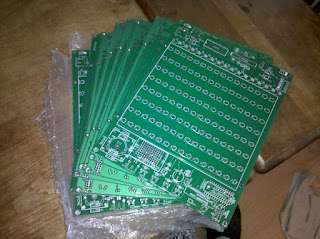I don't usually do this: advertising a project before its completion. But
the beans are out anyway :)
I have already received inquiries about
ClockTHREE price and availability. Although I don't make this kit and I did not participate in its design, I would gladly redirect all questions to its makers, the
WyoLum team, mainly Justin and Anool.
The latest news is that
ClockTHREE (
read my brief review here) is already
available in their store as a "complete kit" for US$333. It may look expensive, but considering what is included, it may actually pass as a bargain. Just think of the following:
- stylish, unique, wall-mountable, well designed & engineered, hackable, Arduino-programmable, multi-color Word Clock, featuring alarm, day-of-week and temperature display, scrolling text, plus many function modes;
- 160 high-quality 10mm RGB diffused LEDs and 32 10mm diffused white LEDs;
- a huge (about 25cm x 30cm) PCB and a lot of electronic components, including an ATmega328 and a ChronoDot;
- a large set of laser-cut plastic parts for baffles and enclosure, and the laser printed faceplates;
- great (open source) software developed specifically for it.
The assembled
ClockTHREE is also
available for US$444 (they surely have an affinity for numbers :).
Now back to the beans: a simplified, and hence lower-cost, version of
ClockTHREE is under development by the same great WyoLum team (I also joined in for this one). It was named
C3Jr, as in
ClockTHREE Junior. Its functionality will be similar: word clock, alarm, day of week, various display modes etc.
C3Jr will be single-color (usually white; blue is also considered), just a bit smaller, and, hopefully, as elegant as its predecessor. The "
C3Jr complete kit" will be priced at under $200 and available mid June (2011), just in time for
MakerFaire North Carolina.
Stay tuned for more details.
Updated May 16, 2011
PCBs are in, shown below (photo by Justin).
Updated May 20, 2011
C3Jr assembled by Justin. I think it looks beautiful.
















